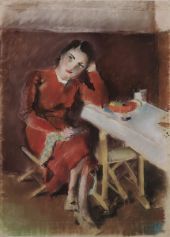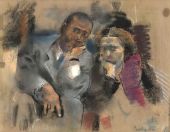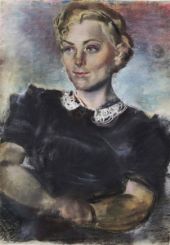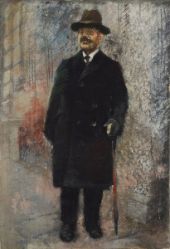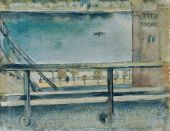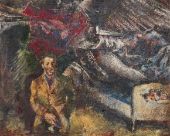Friedl Dicker Brandeis Oil Painting Reproductions
Friedl Dicker Brandeis replica paintings on Canvas for sale
Friedl Dicker-Brandeis was a Jewish artist who was born in Vienna in 1898. She died in 1944 at the Auschwitz Concentration Camp aged 46.
Dicker-Brandeis was a multi-faceted artist known not only for her oil paintings but also for her work with textile design. After marrying her cousin, Pavel Brandeis, in 1936, she adopted the name Friedl Dicker-Brandeis. She studied at the Weimar Bauhaus from 1919 to 1923, and her work bears the influence of fellow Bauhaus artist Paul Klee, who taught there from 1921 to 1931.
Her life was consumed with creativity. Having obtained Czech nationality, Friedl Dicker-Brandeis and her husband were deported from Harnov in Czechoslovakia to Theresienstadt in December 1942. Her suitcase comprised solely of art materials smuggled into the camp. Here, she gave art education to hundreds of children in the Terezin camp. When her husband was transferred to Auschwitz, Friedl Dicker-Brandeis followed shortly afterward. She died less than a month after arriving at the Auschwitz-Birkenau concentration camp, although Pavel Brandeis survived.
Before departing the Terezin camp, Friedl Dicker-Brandeis left behind a wealth of art comprising 4500 drawings as an enduring legacy of her work with the children of the Theresienstadt, many of whom regarded her as a mother figure.
Lady in a Car was painted in 1940 and displayed at the Jewish Museum in Prague.
Discover oil painting reproductions by Friedl Brandeis-Dicker, a heroine among famous Jewish artists.
Cannot Find What You Are Looking For?
Reproduction Gallery Information
Customer Service
(Send Us A Message)
Tel: (503) 937 2010
Fax: (503) 937 2011


